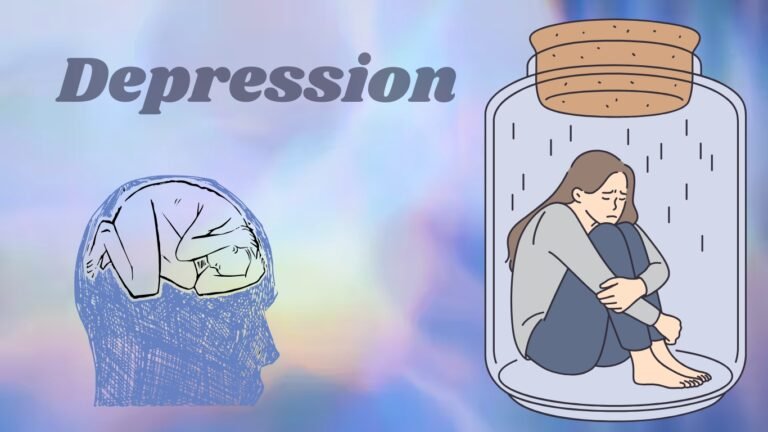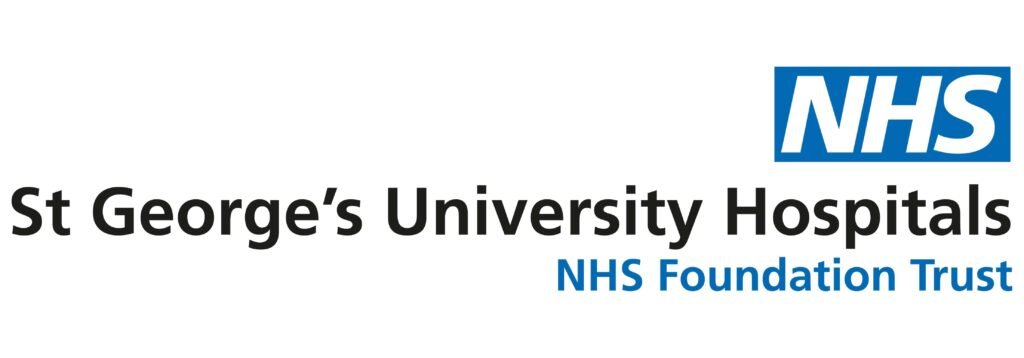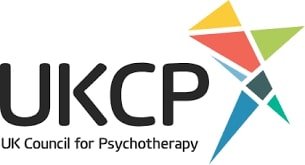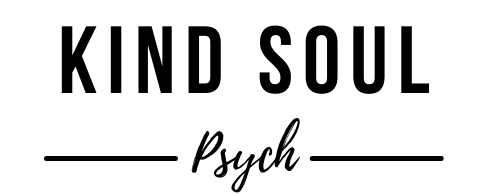
Depression: Causes, Symptoms, and Effective Treatments
Depression is most commonly misunderstood as feeling “low”, or as a weekly (or seasonal) sadness; it, however, is a complex mental health condition which affects the lives of an estimated 280 million people worldwide (World Health Organisation, 2023).
Depression can negatively affect daily functioning, interpersonal relationships, and even lead to a decline in physical health, all without acknowledging its symptoms or origins. Thus, it is, sadly, a misunderstood, or even ignored, condition.
This article is for educational and informational purposes only. Please see full disclaimer below.
What is depression?
Depression can be defined as a chronic mental health condition; in particular, a mood disorder, which leads to persistent feelings of low mood and/or loss of interest (Chand and Arif, 2021).
For example, depression is commonly associated with feelings of emptiness and irritable mood, alongside psychological and somatic, or physical, changes which can affect the individual’s functioning (Ormel et al., 2019) thereby impacting their quality of life negatively.
Thus, depression typically does not lessen with “positive thinking” or the mere passage of time since an emotionally negative event has occurred, contrasted with temporary sadness or “a case of the blues”.
So recovering from, and eventually beating, depression is an active process per se; this may involve lifestyle changes, talking therapies and even taking antidepressant medication (where prescribed).
Signs and Symptoms of Depression:
Some common signs of depression can include (but are not limited to):
Low mood or a chronic feeling of sadness
Loss of interest in most daily activities or interests (anhedonia)
Pronounced reduction in energy (fatigue)
Harsh changes in urge for food (quantity of pounds misplaced or received)
Problems with attention/concentration, judgement or decision making
Problems sleeping (either insomnia or oversleeping)
Feeling guilty, or lack of self-worth (worthlessness)
Physical (somatic) symptoms, including headaches or stomach upsets without obvious immediate cause
Suicidal/self-harming ideation (thoughts of self-harm or suicide)
Everyone experiences depression differently; although some people may experience only mild symptoms of depression, others may experience more severe depressive symptoms which can particularly affect their quality of life negatively.
Types of Depression:
There are a few main types of depression; most depressive diagnoses fall under one of these general types.
The most common forms of depressive diagnoses are:
- Major depressive disorder (MDD), a serious mental health condition, is commonly defined as the presence of severe depressive symtomatology alongside a depressed mood, anhedonic affect/behaviour, suicidal ideation and other physical and cognitive symptoms (Marx et al., 2023). Clinically, the symptoms must have persisted for at least two weeks (Falk et al., 2023), thereby significantly hindering the ability to participate socially and function in day-to-day life to meet the diagnostic criteria of MDD.
- Persistent depressive disorder (PDD), previously termed dysthymia, is a longer-term type of depression which lasts for longer than two years in adults or longer than a year in children and adolescents (Patel et al, 2024.) However, PDD is generally milder than MDD in its symptoms even though PDD symptoms can still impact daily life.
- Postpartum depression often occurs in mothers who have just given birth and can cause sadness as well as anxiety and exhaustion. Such emotional strain often renders the transition into motherhood harder for new mothers.
- Atypical depression doesn’t quite fit into any of the usual categories/subtypes of depression (such as MDD or PDD; hence, ‘atypical’). In contrast to other forms of depression in which the individual tends to remain sad even in the presence of positive events, an important aspect of this type of depression is a clear increase in subjective happiness (mood reactivity; Asnis et al., 1995) responding to the occurrence of positive events.
Davidson et al. (1982) distinguish between two subtypes of atypical depression, which they term Type A, characterised by prominent anxiety, and Type B, producing specific vegetative symptoms including feed increase (obesity), hypersomnia and/or decreased sexual libido. These symptoms can negatively impact social engagement, educational or work activity, which can lead to a diminished quality of life.
The first step towards working to an action plan, or treatment plan, for people to overcome their depressive symptoms is to have a clear understanding of what sort of depression they are suffering from.
What Causes Depression?
The causes of depression are complex, encompassing biological, psychological and environmental (including psychosocial) factors.
From a biological perspective, depression is usually linked to chemical imbalances in neurotransmitters (brain chemicals) within the areas of the brain related to positive mood.
However, recent research shows that depression is not actually caused by an imbalance of brain chemicals (Harvard Health Publishing, 2022), but rather, an imbalance of activity in different regions of the human brain.
Psychological factors, such as chronic stress, low self-esteem, or traumatic life events, may also provoke or worsen depressive symptoms. Some aspects of the environment (environmental factors), such as a chaotic home, financial stress or job stress, for example, can trigger, or worsen, depressive symptoms.
This can also involve social factors, such as feeling isolated, the resulting lack of social support, or trouble within relationships, which can contribute to (or exacerbate) existing depressive symptoms.
These different causes of depression indicate the need for an individualised approach in the treatment of depression for different individuals, due to the diversity of causes people can experience depression as a result, enabling person-centred depression treatment which is tailored to the individual.
Is Depression Treatable?
Depression is by no means a permanent disease; it’s a treatable condition.
There are a few treatments and therapies which can aid people with their depressive symptoms and even overcome their depression.
Depression support groups, alongside discussing one’s feelings and emotions with friends, can help foster emotional resilience and thereby foster emotional resilience and increased mental wellbeing.
Treatment for depression typically requires some combination of holistic lifestyle changes (a healthy diet, sufficient exercise and positive relationships) and professional, expert support in the form of psychotherapy, depression support groups and, where prescribed by a doctor, antidepressants.
There are several types of psychotherapy available, including cognitive behavioral therapy (CBT) and psychodynamic psychotherapy, which can help individuals with depression to reframe negative thinking, which helps to create healthier patters of thought.
Counselling can also provide a safe space where a person can express not just their feelings and emotions but their problems as well.
Antidepressants (drugs for treatment of depression) work on neurochemicals such as serotonin and dopamine, which directly influence depression but must be taken only in prescribed doses by a mental health professional under appropriate guidance.
These include the most widely used categories of antidepressant medications, such as selective serotonin reuptake inhibitors (SSRIs) (e.g. fluoxetine (Prozac) and sertraline (Zoloft)), serotonin and norepinephrine reuptake inhibitors (SNRIs) (e.g. venlafaxine) and tricyclic antidepressants (e.g. amitriptyline).
People with depression can get started on positive habits such as exercising, eating healthy, meditating, avoiding electronic device use 60-120 minutes before going to bed and meditating (for example, guided meditations found on YouTube).
These habits encourage people with depression to take care of themselves, increasing their mental wellbeing.
Why Is Therapy Important For Depression Recovery?
One of the key treatments for depressive symptoms is therapy. Some of the benefits of therapy are that it can help improve coping skills and resilience, as well as identify and rectify unhelpful thought patterns and behaviours, ultimately supporting individuals with depression to have better relationships and ultimately address underlying concerns which may be contributing to their depression.
Some of the key therapy approaches in treating depression include cognitive behavioral therapy (CBT), facilitating a safe space for individuals to recognise and understand their psychological patterns of potentially unhelpful thoughts and behaviours. This allows them to challenge their own self-limiting thoughts and beliefs, supporting them to develop more positive, balanced ways of thinking.
Psychodynamic therapy is a form of talking therapy which adopts an exploratory approach, providing a safe space for individuals to address and understand potentially unresolved psychological issues such as suppressed emotions.
Psychodynamic therapy does not only focus on symptom relief but more importantly it focuses on the root causes of depressive symptoms, for example latent/suppressed emotional wounds and thought patterns which may continue to contribute to depressive symptoms.
Dialectical behaviour therapy (DBT) is a structured therapy approach which supports individuals struggling with depression to build and develop practical skills for emotional regulation, distress tolerance and mindfulness.
DBT’s structured framework can foster a safe space in which individuals with depression can learn to develop healthier coping mechanisms, improving their relationships and ultimately quality of life.
In a nutshell, therapy provides individuals with depression with the long-term tools they need to manage depressive symptoms and recover from depression, strengthening their emotional resilience and rebuilding their confidence.
If someone is battling persistent sadness, feeling detached from life, or struggling motivation, therapy can be a beacon of hope and control for an individual to reclaim their life, by providing the support and psychological skills needed to rediscover hope and thus take back control over their lives.
Looking to begin your journey towards depression recovery?
Conclusion:
In a nutshell, depression is a complex mental illness which goes far beyond having a bad day, or everyday sadness.
Depression impacts millions of people worldwide. presenting in myriad ways from emotional and psychological disorders to physical symptoms, which all interfere with functioning and quality of life (World Health Organization, 2023; Ormel et al., 2019).
As mentioned above, it is important to identify the type of depression early in order to receive effective treatment.
When lifestyle changes alongside psychotherapy modalities such as CBT, psychodynamic or DBT therapy are combined alongside pharmacological treatment where appropriate, this can support individuals to work towards depression recovery and strengthen their emotional wellbeing.
This reaffirms that depression is essentially curable; with the appropriate support and strategies, individuals can manage their depression well and potentially overcome it.
FAQ:
Q1: What makes depression different from ordinary sadness?
A: In contrast to transient feelings of sadness or the “blues,” depression is a chronic condition that involves chronic low mood and loss of interest in activities alongside many cognitive, as well as physical, symptoms (Chand and Arif, 2021). It does not simply go away with time or positive thinking.
Q2: What are the main types of depression?
A: The article discusses several forms of depression including Major Depressive Disorder (MDD), Persistent Depressive Disorder (PDD), postpartum depression, and atypical depression, which are each characterised by unique symptomatology with varying durations of symptoms. This means that depression treatment can differ based on its subtype and corresponding presentation (Marx et al., 2023; Patel et al., 2024).
Q3: What role do lifestyle changes play in treating depression?
A: Lifestyle adjustments such as maintaining a healthy diet, regular exercise routine and ensuring sleep hygiene can substantially enhance, and not just complement, professional treatments such as psychotherapy and medication. Following these habits will positively contribute towards your mental wellbeing and can be counted as part of a holistic treatment plan.
Q4: How can therapy support recovery from depression?
A: There are many forms of therapy, such as cognitive behavioral therapy (CBT), psychodynamic therapy, and dialectical behaviour therapy (DBT) which can provide you with tools for working through and managing negative thought patterns, processing emotions and learning to function with healthier coping methods. Facilitating this mental environment is critical to long-term recovery (see “Why Is Therapy Important For Depression Recovery?”).
Q5: Is depression treatable even if it appears to be a lifelong struggle?
A: Yes. Depression can be chronic, but it is not a permanent, or lifelong, condition. Many individuals with depression go on to experience substantial improvement/recovery over time (Harvard Health Publishing, 2022) through an individualised approach, which may include psychotherapy, medication, and lifestyle modifications (varying from person to person).
References:
- Asnis, G. M., McGinn, L. K., & Sanderson, W. C. (1995). Atypical depression: clinical aspects and noradrenergic function. The American journal of psychiatry, 152(1), 31–36. Available at: Atypical depression: clinical aspects and noradrenergic function. [Accessed 7th March 2025]
- Chand, S. P., & Arif, H. (2021). Depression. PubMed; StatPearls Publishing. Available at: Depression. [Accessed 7th March 2025]
- Davidson, J. R., Miller, R. D., Turnbull, C. D., & Sullivan, J. L. (1982). Atypical depression. Archives of general psychiatry, 39(5), 527–534. Available at: Atypical depression. [Accessed 7th March 2025]
- Falk, A., Joseph, R., Smith, S., & Wilk, A. (2023). Mood and Anxiety Disorders: Major Depressive Disorder. FP essentials, 527, 7–12.
- Harvard Health Publishing. (2022, January 10). What Causes depression? Harvard Health; Harvard Health Publishing. Available at: What Causes depression? [Accessed 7th March 2025]
- Marx, W., Penninx, B. W. J. H., Solmi, M., Furukawa, T. A., Firth, J., Carvalho, A. F., & Berk, M. (2023). Major depressive disorder. Nature reviews. Disease primers, 9(1), 44. Available at: Major depressive disorder. [Accessed 7th March 2025]
Ormel, J., Kessler, R. C., & Schoevers, R. (2019). Depression: more treatment but no drop in prevalence: how effective is treatment? And can we do better? Current Opinion in Psychiatry, 32(4), 348–354. Available in Currrent Opinion in Psychiatry. [Accessed 7th March 2025]
- Patel, R. K., Aslam, S. P., & Rose, G. M. (2024). Persistent Depressive Disorder. In StatPearls. StatPearls Publishing.
World Health Organization. (2023, March 31). Depressive disorder (depression). World Health Organization; World Health Organization. Available at Depressive disorder (depression). [Accessed 7th March 2025]
Disclaimer: The author, Sabbir Ahmed, is a registered psychotherapist (UKCP Reg: 2011164676). Sabbir has written this article for informational and educational purposes only, and referenced relevant sources when writing this article.
Reading this article, in and of itself, does not create a therapist–client relationship.
All content is provided on an “as is” basis; no guarantees are made as to its accuracy or completeness.
The information contained on Kind Soul Psych is for general information purposes only and does not purport to be, or constitute, medical and/or legal advice.




All Rights Reserved.

